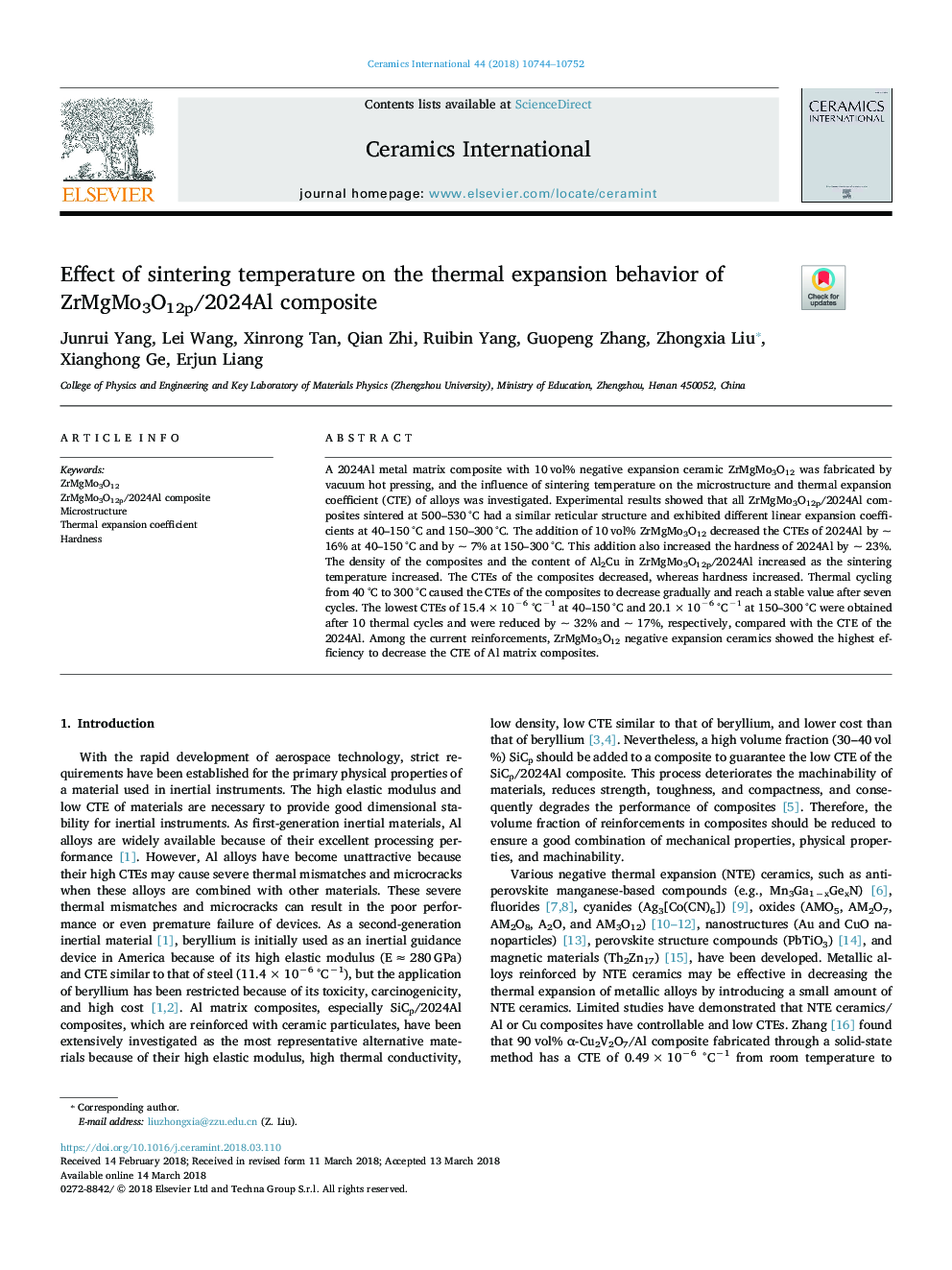| Article ID | Journal | Published Year | Pages | File Type |
|---|---|---|---|---|
| 7887336 | Ceramics International | 2018 | 9 Pages |
Abstract
A 2024Al metal matrix composite with 10â¯vol% negative expansion ceramic ZrMgMo3O12 was fabricated by vacuum hot pressing, and the influence of sintering temperature on the microstructure and thermal expansion coefficient (CTE) of alloys was investigated. Experimental results showed that all ZrMgMo3O12p/2024Al composites sintered at 500-530â¯Â°C had a similar reticular structure and exhibited different linear expansion coefficients at 40-150â¯Â°C and 150-300â¯Â°C. The addition of 10â¯vol% ZrMgMo3O12 decreased the CTEs of 2024Al by ~ 16% at 40-150â¯Â°C and by ~ 7% at 150-300â¯Â°C. This addition also increased the hardness of 2024Al by ~ 23%. The density of the composites and the content of Al2Cu in ZrMgMo3O12p/2024Al increased as the sintering temperature increased. The CTEs of the composites decreased, whereas hardness increased. Thermal cycling from 40â¯Â°C to 300â¯Â°C caused the CTEs of the composites to decrease gradually and reach a stable value after seven cycles. The lowest CTEs of 15.4â¯Ãâ¯10â6 °Câ1 at 40-150â¯Â°C and 20.1â¯Ãâ¯10â6 °Câ1 at 150-300â¯Â°C were obtained after 10 thermal cycles and were reduced by ~ 32% and ~ 17%, respectively, compared with the CTE of the 2024Al. Among the current reinforcements, ZrMgMo3O12 negative expansion ceramics showed the highest efficiency to decrease the CTE of Al matrix composites.
Related Topics
Physical Sciences and Engineering
Materials Science
Ceramics and Composites
Authors
Junrui Yang, Lei Wang, Xinrong Tan, Qian Zhi, Ruibin Yang, Guopeng Zhang, Zhongxia Liu, Xianghong Ge, Erjun Liang,
